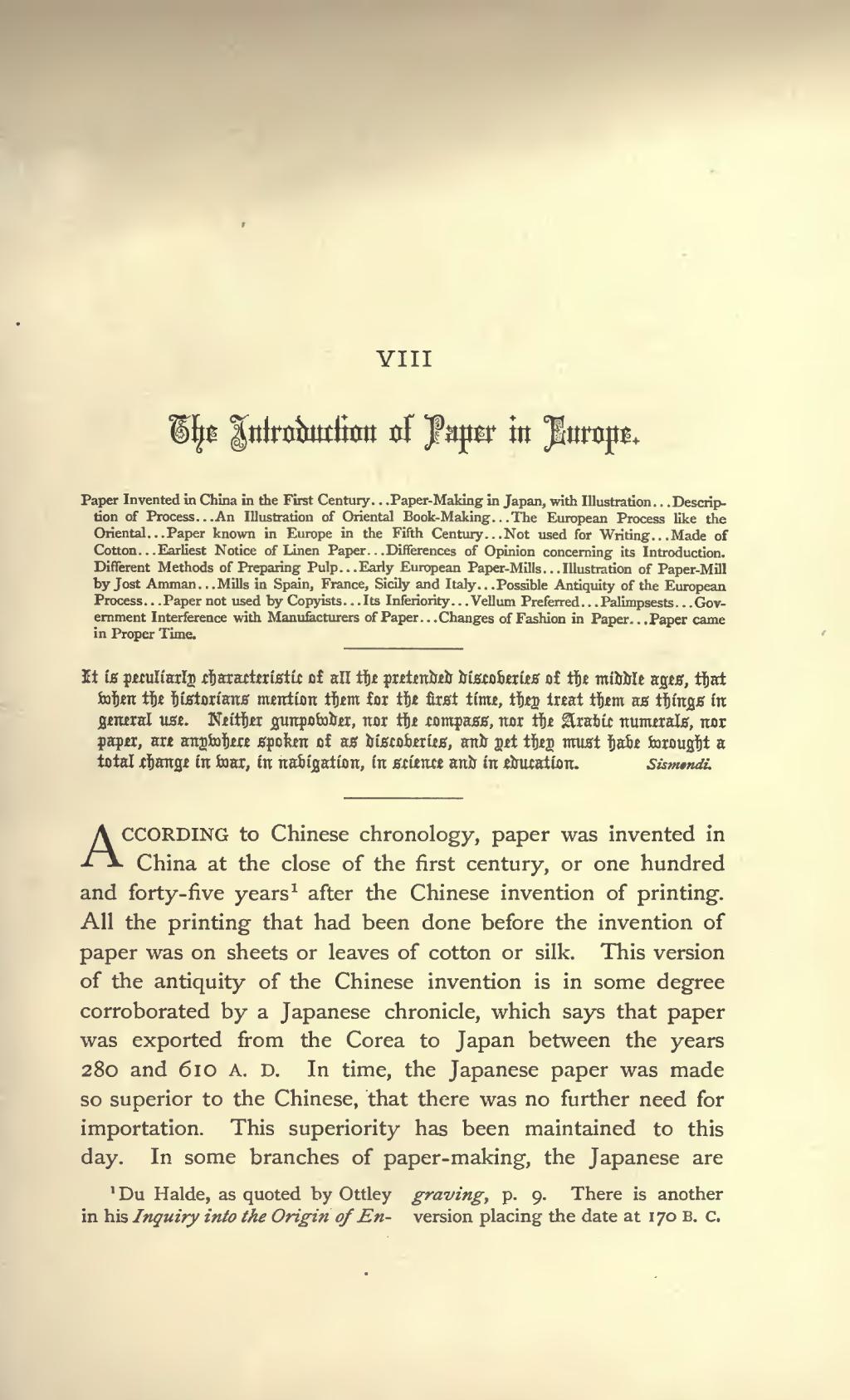VIII
The Introduction of Paper in Europe.
Paper Invented in China in the First Century…Paper-Making in Japan, with Illustration…Description of Process…An Illustration of Oriental Book-Making…The European Process like the Oriental…Paper known in Europe in the Fifth Century…Not used for Writing…Made of Cotton…Earliest Notice of Linen Paper…Differences of Opinion concerning its Introduction…Different Methods of Preparing Pulp…Early European Paper-Mills…Illustration of Paper-Mill by Jost Amman…Mills in Spain, France, Sicily and Italy…Possible Antiquity of the European Process…Paper not used by Copyists…Its Inferiority…Vellum Preferred…Palimpsests…Government Interference with Manufacturers of Paper…Changes of Fashion in Paper…Paper came in Proper Time.
According to Chinese chronology, paper was invented in China at the close of the first century, or one hundred and forty-five years[1] after the Chinese invention of printing. All the printing that had been done before the invention of paper was on sheets or leaves of cotton or silk. This version of the antiquity of the Chinese invention is in some degree corroborated by a Japanese chronicle, which says that paper was exported from the Corea to Japan between the years 280 and 610 a. d. In time, the Japanese paper was made so superior to the Chinese, that there was no further need for importation. This superiority has been maintained to this day. In some branches of paper-making, the Japanese are
- ↑ Du Halde, as quoted by Ottley in his Inquiry into the Origin of Engraving, p. 9. There is another version placing the date at 170 b. c.
